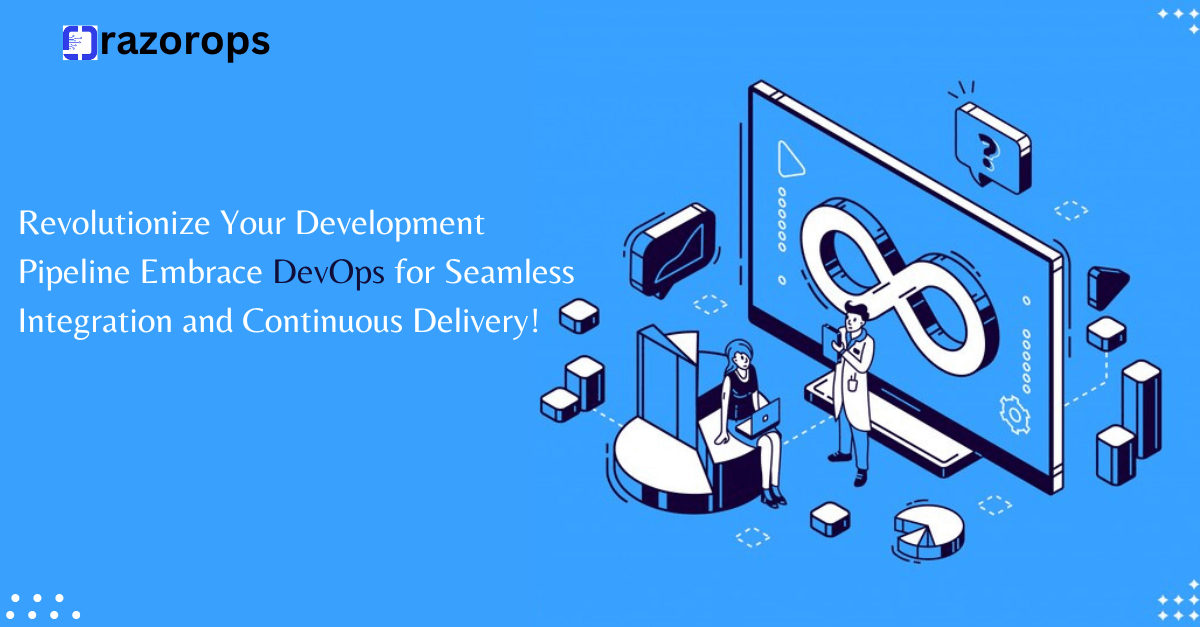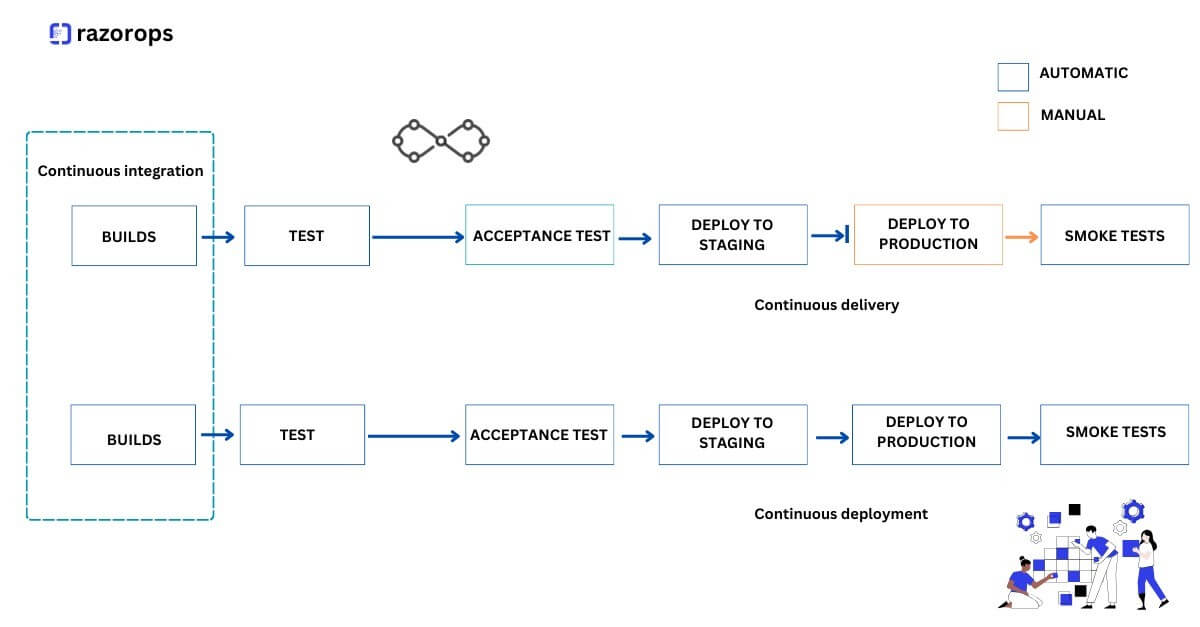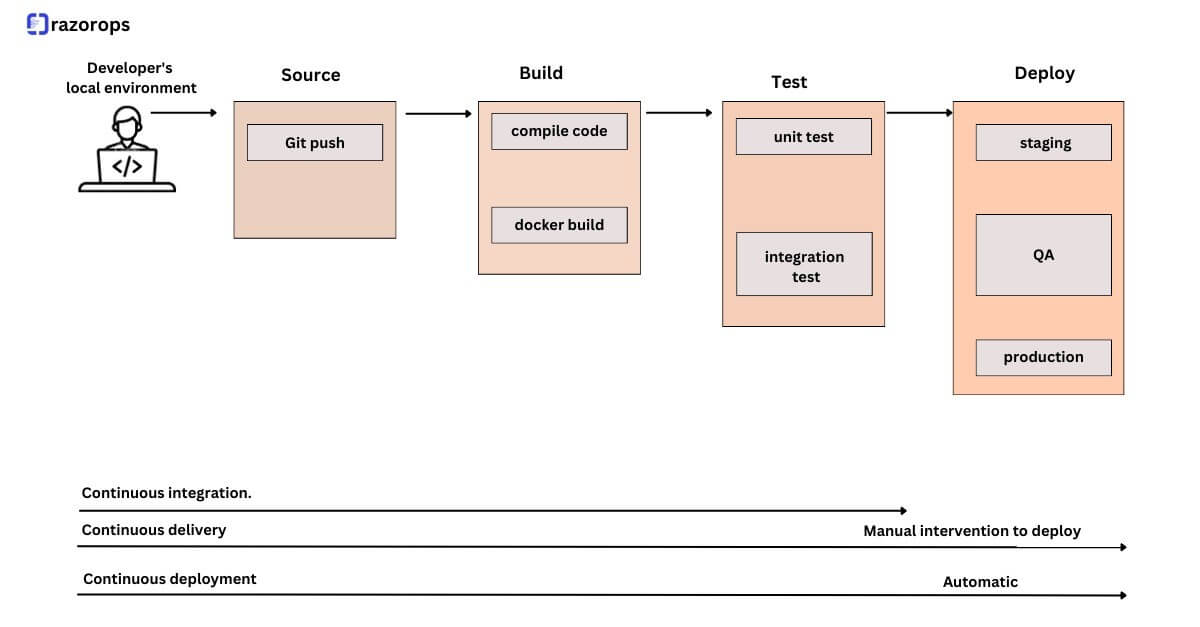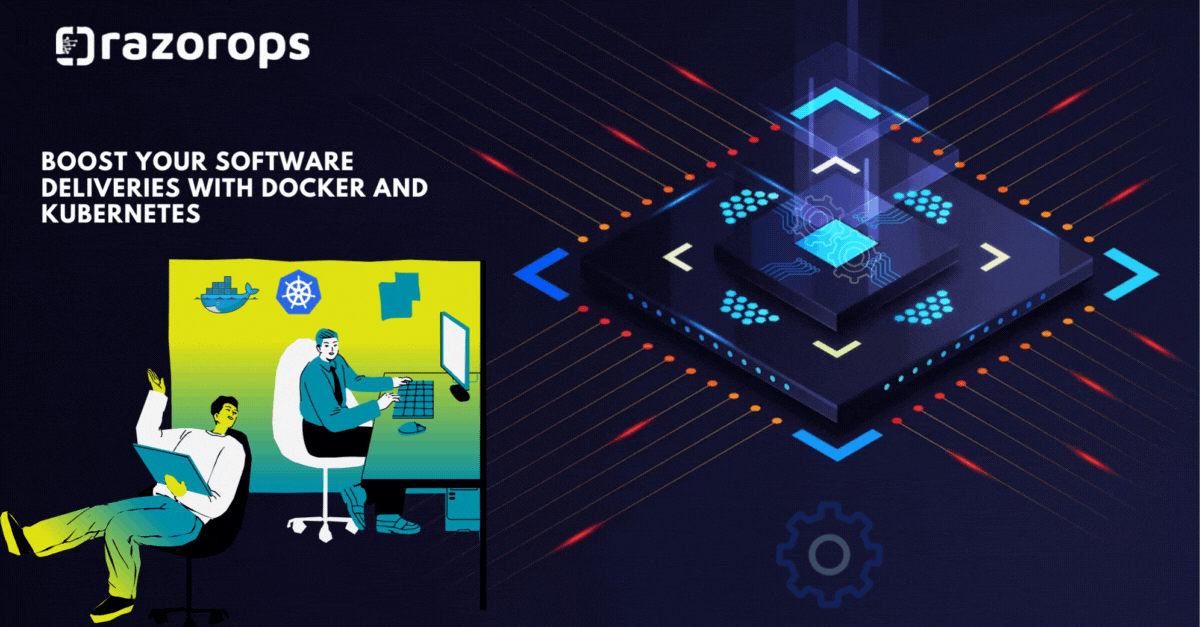Streamlining Kubernetes Workflows The Power of CI/CD Integration

In the ever-evolving landscape of software development, where agility and reliability are paramount, Kubernetes has emerged as a game-changer with its container orchestration capabilities. However, as applications become more complex and distributed, managing Kubernetes workflows presents a unique set of challenges. Enter the dynamic duo of Continuous Integration (CI) and Continuous Deployment (CD) – a powerful combination that can revolutionize how Kubernetes environments are managed, making the development and deployment process smoother, more efficient, and ultimately, more effective.
The Complex Landscape of Kubernetes Workflows
Kubernetes has redefined how applications are deployed and managed, offering scalability, resilience, and the ability to leverage microservices architecture. Yet, the flip side of this power is the inherent complexity that comes with orchestrating containers across clusters. The intricacies of managing networking, storage, and service discovery, among other aspects, can be overwhelming. This complexity necessitates an intelligent approach to streamline workflows and ensure that the full potential of Kubernetes is realized.
The Role of CI/CD in Kubernetes Efficiency
Enter Continuous Integration (CI) and Continuous Deployment (CD) – practices that have gained significant traction in modern software development for good reason. CI involves the frequent integration of code changes into a shared repository. In a Kubernetes context, this means that developers are consistently merging their code into the main branch, allowing for early detection and resolution of conflicts. Automated testing can then be seamlessly woven into the process, ensuring that any issues are caught before they cascade downstream.
Continuous Deployment takes the concept a step further, automating the deployment of code that has passed these tests into production environments. This means that once a change is validated, it can be rapidly and reliably deployed, reducing the manual intervention and risk of human error associated with traditional deployment methods. In the context of Kubernetes, where managing numerous containers across clusters can be challenging, CD’s automation capabilities are a game-changer, ensuring consistency and reducing the potential for configuration drift.
The Symbiosis: Kubernetes and CI/CD
The marriage of Kubernetes and CI/CD creates a harmonious synergy that significantly enhances development workflows. This integration transforms the development pipeline into a well-oiled machine, where code changes are automatically built, tested, and deployed within the Kubernetes environment. Developers can focus on coding, confident that their changes will undergo rigorous testing and seamlessly integrate into the application.
Benefits Abound
The benefits of streamlining Kubernetes workflows through CI/CD integration are manifold. Firstly, it fosters a culture of collaboration between development and operations teams. The silos that often exist between these teams are broken down as both parties work together to automate and optimize the deployment process. This collaborative spirit aligns perfectly with the DevOps philosophy, where communication and cooperation lead to higher-quality software and faster releases.
Secondly, the efficiency gained from CI/CD integration translates into shorter release cycles. Rapid iterations become possible, enabling organizations to respond swiftly to changing market demands and user feedback. This agility is especially critical in today’s fast-paced digital landscape, where adaptability is a competitive advantage.
Thirdly, the automation inherent in CI/CD integration reduces the risk of human error. The automated testing, validation, and deployment processes minimize the chances of misconfigurations or other manual mistakes that can lead to downtime or vulnerabilities.
Navigating Challenges
While the benefits are substantial, embracing CI/CD integration within Kubernetes workflows is not without its challenges. Orchestrating containers and managing complex networking setups requires a deep understanding of both Kubernetes and CI/CD tools. Moreover, ensuring security and compliance throughout the automated pipeline is a priority that demands careful attention.
In the world of Kubernetes, where complexity and speed go hand in hand, the integration of CI/CD practices offers a beacon of efficiency. By automating the deployment pipeline, from
code changes to production-ready containers, organizations can harness Kubernetes’ potential while minimizing its complexities. Collaboration between development and operations is elevated, and the software development lifecycle becomes a continuous loop of improvement. As businesses continue to rely on Kubernetes for their critical applications, the synergy between Kubernetes and CI/CD is a strategy that will undoubtedly shape the future of software development.
Streamlining Kubernetes Workflows: Enhancing Efficiency Through Effective CI/CD Integration
In the ever-evolving landscape of software development, where agility and speed are paramount, Kubernetes has emerged as a powerful solution for container orchestration. Its ability to automate deployment, scaling, and management of containerized applications has revolutionized the way modern applications are developed and deployed. However, as the complexity of these containerized applications increases, so does the need for efficient workflows and robust automation strategies. This is where the integration of Continuous Integration (CI) and Continuous Deployment (CD) pipelines comes into play, offering a game-changing approach to streamline Kubernetes workflows and maximize development efficiency.
The Kubernetes Challenge
Kubernetes, with its declarative approach to managing containerized applications, offers a flexible and scalable infrastructure that can adapt to the demands of modern software. Yet, the potential intricacies of managing these applications across various environments can pose challenges. Manual interventions in the deployment process can introduce errors, inconsistencies, and hinder the agility that Kubernetes promises. As applications grow in complexity, the traditional manual workflows become a bottleneck in the development pipeline.
The CI/CD Advantage
Continuous Integration (CI) is the practice of frequently integrating code changes into a shared repository. This approach enables developers to identify conflicts and inconsistencies early, facilitating smoother collaboration and reducing integration issues. Continuous Deployment (CD), on the other hand, automates the deployment process, allowing developers to consistently deliver code changes to production-like environments. When applied to Kubernetes workflows, these principles can work wonders.
Seamless Integration with Kubernetes
The integration of CI/CD pipelines with Kubernetes environments holds the potential to transform the development landscape. Developers can automatically trigger build and deployment processes whenever code changes are committed, ensuring that the latest version is tested and validated. Automated testing can encompass various aspects, from unit tests to integration tests and even performance tests. This not only accelerates development cycles but also maintains a high standard of software quality.
Fostering Collaboration and Agility
One of the significant outcomes of CI/CD integration in Kubernetes workflows is the fostering of a collaborative DevOps culture. Developers and operations teams work in tandem to automate processes, breaking down traditional silos and fostering a sense of shared responsibility. This collaboration leads to faster feedback loops, quicker issue resolution, and a culture of continuous improvement.
Mitigating Risk Through Automation
Automating deployments in Kubernetes environments significantly reduces the risk of human errors. Manual interventions are minimized, ensuring that applications are deployed consistently across different stages. Rollbacks become more manageable, as the entire process is orchestrated through code, allowing teams to quickly revert to a previous version in case of unforeseen issues.
Embracing Kubernetes-Native Tools
To effectively streamline workflows, organizations can leverage Kubernetes-native CI/CD tools and platforms. These tools are designed to seamlessly integrate with Kubernetes clusters, offering features tailored to the unique demands of containerized applications. They provide the ability to define deployment manifests as code, manage configuration drift, and automate the scaling of applications, all within the Kubernetes ecosystem.
As organizations strive to deliver software faster and with greater reliability, the integration of CI/CD pipelines into Kubernetes workflows emerges as an essential practice. It offers a way to navigate the complexities of containerized applications, enabling automated testing, consistent deployments, and collaborative development. By embracing these principles and leveraging Kubernetes-native tools, development teams can unlock the full potential of modern software delivery, enhancing efficiency, quality, and agility in an increasingly competitive digital landscape.
The Power of CI/CD Integration
In the ever-evolving landscape of software development, staying competitive requires not only cutting-edge technologies but also streamlined processes that can keep up with the pace of innovation. This is where the power of Continuous Integration (CI) and Continuous Deployment (CD) integration comes into play. CI/CD integration has transformed the way software is developed, tested, and deployed, offering a remarkable array of benefits that empower development teams to achieve more in less time while maintaining the highest quality standards.
Understanding CI/CD Integration: A Holistic Approach to Development
At its core, CI/CD integration represents a comprehensive approach to software development that revolves around automation, collaboration, and continuous improvement. Continuous Integration involves the practice of regularly merging code changes from individual developers into a shared repository. This frequent integration promotes early detection and resolution of conflicts, reducing the likelihood of integration issues that can arise when large changes are merged at once. The integration process is further enhanced through automated build and testing pipelines that ensure code quality and functionality.
Continuous Deployment, on the other hand, extends the CI concept by automating the process of deploying code changes to production environments. This automation eliminates the manual intervention that can introduce errors and delays. CD ensures that every validated code change is swiftly and reliably pushed into production, reducing the time between development and deployment and facilitating rapid feature delivery.
The Transformative Impact on Development Workflow
The integration of CI/CD into the development workflow is transformative, leading to several key advantages
Faster Time-to-Market: The automation of build, test, and deployment processes expedites the delivery of new features and bug fixes. Developers can see their changes in action quickly, enabling faster feedback loops and reducing development cycles.
Enhanced Quality Assurance: Automated testing in the CI/CD pipeline detects issues early in the development process. This minimizes the risk of bugs and regressions making their way into production, enhancing software reliability and customer satisfaction.
Reduced Manual Intervention: Manual deployment processes are error-prone and time-consuming. CI/CD automation eliminates manual steps, ensuring consistent and repeatable deployments across environments.
Collaboration and Transparency: CI/CD encourages collaboration between development and operations teams. It breaks down silos by providing a shared platform for testing, deployment, and monitoring, fostering a culture of shared responsibility.
Iterative Improvement: The continuous nature of CI/CD allows for ongoing refinements to the development process. Feedback from each cycle informs improvements, enabling teams to adapt to changing requirements and technologies more effectively.
Unleashing the Full Potential with Kubernetes Integration
For organizations embracing containerization and microservices architecture, the integration of CI/CD with Kubernetes provides an even more potent solution. Kubernetes, with its container orchestration capabilities, offers a standardized and scalable environment for deploying and managing containerized applications. By integrating CI/CD pipelines with Kubernetes, development teams can seamlessly build, test, and deploy applications to these dynamic environments.
CI/CD and Kubernetes creates a powerful synergy. Automated testing ensures that applications are thoroughly evaluated before deployment, and the automated deployment process eliminates manual errors while accommodating the dynamic nature of Kubernetes clusters. This integration allows teams to deploy confidently and frequently, enabling a continuous flow of features and updates.
In the fast-paced world of software development, where competition is fierce and user expectations are higher than ever, embracing the power of CI/CD integration is no longer a choice—it’s a necessity. The efficiency, quality assurance, and collaboration benefits that CI/CD integration brings to the table are essential for staying agile and relevant. When integrated with technologies like Kubernetes, these benefits are amplified, creating a development environment that can deliver innovation at speed while maintaining the utmost reliability. As the industry continues to evolve, those who harness the power of CI/CD integration will be at the forefront of innovation and success.









